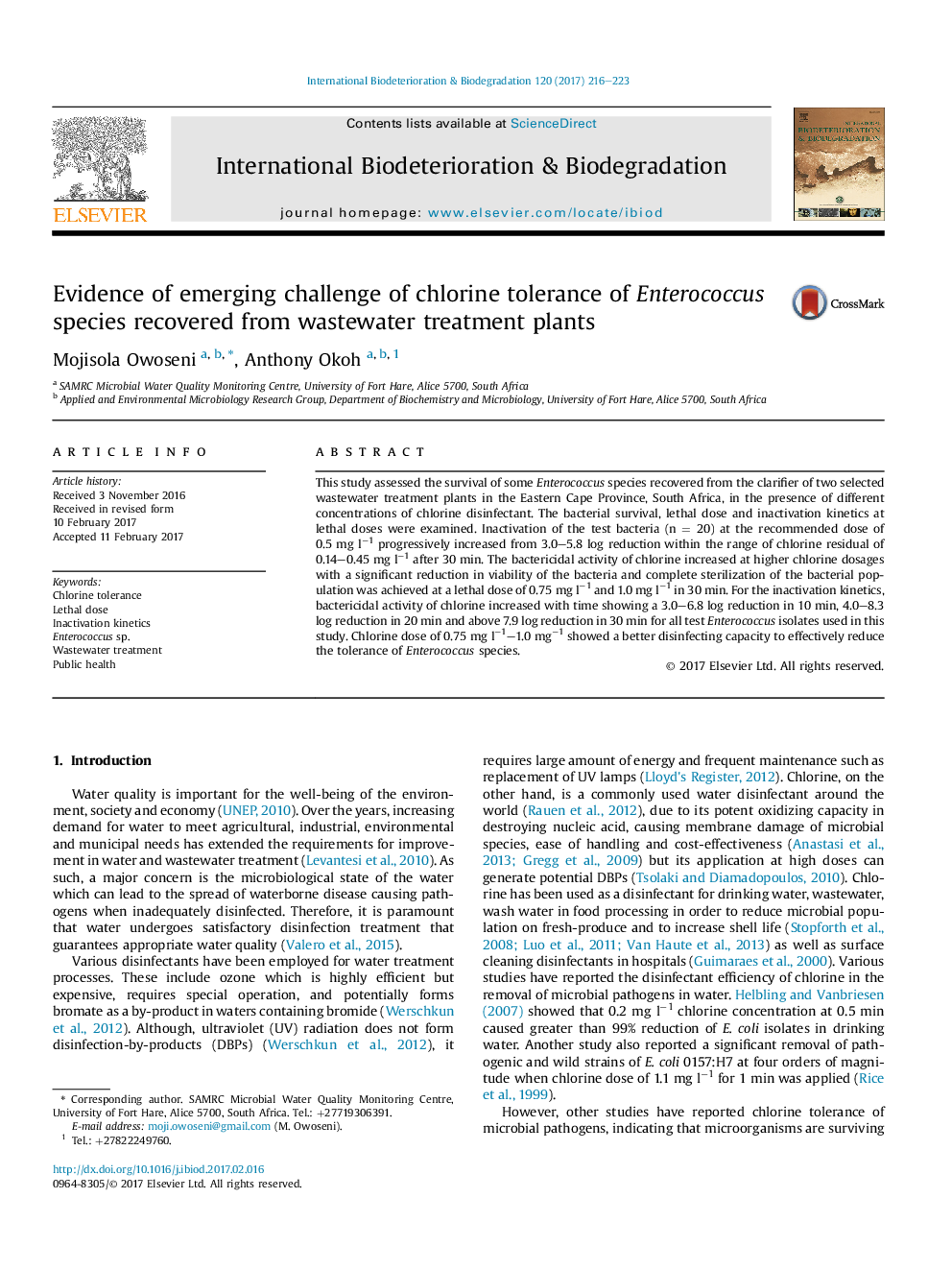| Article ID | Journal | Published Year | Pages | File Type |
|---|---|---|---|---|
| 5740396 | International Biodeterioration & Biodegradation | 2017 | 8 Pages |
Abstract
This study assessed the survival of some Enterococcus species recovered from the clarifier of two selected wastewater treatment plants in the Eastern Cape Province, South Africa, in the presence of different concentrations of chlorine disinfectant. The bacterial survival, lethal dose and inactivation kinetics at lethal doses were examined. Inactivation of the test bacteria (n = 20) at the recommended dose of 0.5 mg lâ1 progressively increased from 3.0-5.8 log reduction within the range of chlorine residual of 0.14-0.45 mg lâ1 after 30 min. The bactericidal activity of chlorine increased at higher chlorine dosages with a significant reduction in viability of the bacteria and complete sterilization of the bacterial population was achieved at a lethal dose of 0.75 mg lâ1 and 1.0 mg lâ1 in 30 min. For the inactivation kinetics, bactericidal activity of chlorine increased with time showing a 3.0-6.8 log reduction in 10 min, 4.0-8.3 log reduction in 20 min and above 7.9 log reduction in 30 min for all test Enterococcus isolates used in this study. Chlorine dose of 0.75 mg lâ1-1.0 mgâ1 showed a better disinfecting capacity to effectively reduce the tolerance of Enterococcus species.
Keywords
Related Topics
Life Sciences
Environmental Science
Environmental Science (General)
Authors
Mojisola Owoseni, Anthony Okoh,
